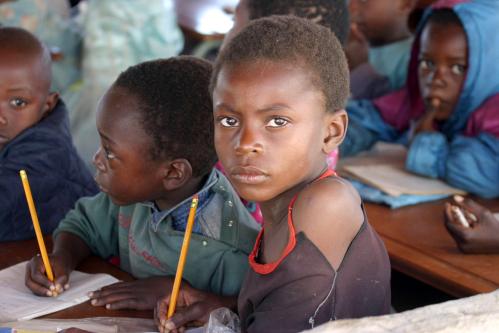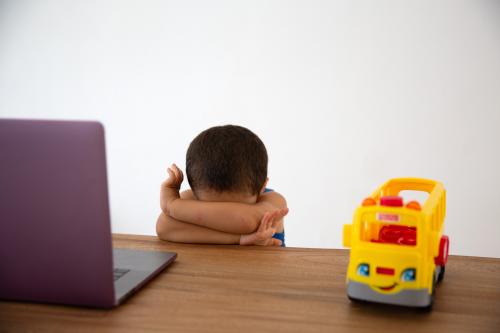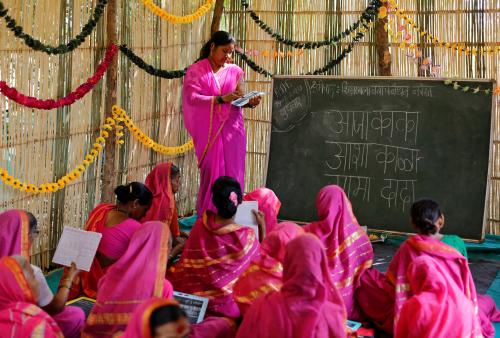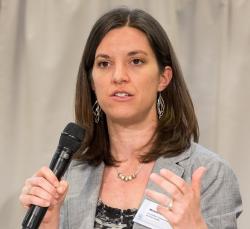Recent evidence suggests that the long-term learning losses from COVID-19 school closures could be big—far surpassing the short-term learning losses experienced during the school closures themselves. A study of the impact of the 2005 earthquake in Pakistan found that while children missed three months of school, four years after the earthquake, they were the learning equivalent of 1.5 years behind where they would have been with no earthquake. The likeliest explanation is that because the students were already behind the curriculum when they reentered school, they continued to fall further behind even after they returned.
How much learning might be lost from COVID-19 school closures in the long run if nothing is done, especially if losses accumulate as the Pakistan study suggests they could? And how much of a difference could mitigation strategies make?
In a working paper that was finished right as the pandemic hit, my colleague Lant Pritchett and I proposed a way to model learning trajectories and outcomes in low- and middle-income countries. This existing, calibrated model provided a way to examine the potential long-term consequences of the current school closures, which I do in a new “Insight Note.” Using the model to introduce a shock, it shows that children in low- and middle-income countries could lose more than a full year’s worth of learning even from a three-month school closure because the losses continue to compound after children return to school. I also use the model to examine two mitigation strategies: short-term or “emergency” remediation, and the same remediation combined with ongoing adaptation of instruction to children’s learning levels. The latter both fully mitigates the losses from the shock and surpasses learning in the counterfactual of no shock by more than a full year’s worth of learning. This offers hope that the learning losses could be stemmed—and that education systems could even come back stronger than before—but doing so requires planning that needs to begin now.
How much learning might be lost?
I examine how school closures affect the learning of today’s grade three students (in low- and middle-income countries) through grade 10 if nothing is done to mitigate the consequences. (Grade three was chosen to be illustrative; we’ll likely run similar analysis for the other grade cohorts in forthcoming work.) The model suggests that if learning in grade three is reduced by one-third, roughly the amount of time many children are likely to be out of school, learning levels in grade 10 would be a full year lower than they would have been with no shock (Figure 1). This is because children have fallen behind the level of instruction while out of school and continue falling further behind as the curriculum progresses once they return.
What can be done to avert these losses?
How might short-term, or “emergency,” remediation programs affect these long-term learning outcomes? I introduce this to the model by assuming that when these children return in grade four, part of the grade three curriculum is covered before moving on to grade four topics. Starting in grade five, instruction reverts to the previously established (pre-pandemic) curriculum and instructional levels. This remediation effort in the year children return to school reduces the long-term learning loss by half, but still leaves children more than half a year behind where they would have been in grade 10 with no shock.
A final scenario illustrates the opportunity education systems have to “build back better.” The steps that education systems will need to take to conduct remedial education—including implementing assessments to identify children’s learning levels, training and empowering teachers to adapt their instruction and pedagogical practices to students’ levels and needs, and prioritizing children’s attainment of essential skills—are well-proven strategies for improving learning outside of a crisis context. For example, the “Teaching at the Right Level” (TaRL) approach, pioneered by Pratham in India, has shown that tailoring instruction to children’s learning levels can produce massive learning gains. The approach is now expanding and scaling in Africa through TaRL Africa. Other programs such as Tusome in Kenya have shown large results from working with governments to reorient curriculum and instructional support to teachers to prioritize foundational skills and ensure all children are learning.
One way systems could “build back better” is to use the skills gained implementing remediation to adapt instruction to children’s learning levels on an ongoing basis. For example, teachers trained to assess children’s learning when they return from school closures could continue to assess children’s learning at regular intervals throughout the year and adapt instruction to meet children where they are.
I model such a scenario, in which “emergency” remediation is combined with ongoing adaptation of instruction to children’s learning levels. This scenario both fully mitigates the long-term learning losses from the school closures and provides children with a full year’s more learning than if there had been no shock (see Figure 1).
The COVID-19 school closures could have many long-term consequences for today’s children. A recent projection of lost wages suggests this generation could lose $10 trillion in earnings over their lifetime due to their time out of school. But long-term lost learning doesn’t have to be one of the consequences. Education systems can start planning now for remediation programs when schools reopen. As they do, they should build programs and train teachers in ways that can continue to produce benefits beyond the reopening period to come back from the crisis stronger than before.







Commentary
How much learning may be lost in the long-run from COVID-19 and how can mitigation strategies help?
June 15, 2020